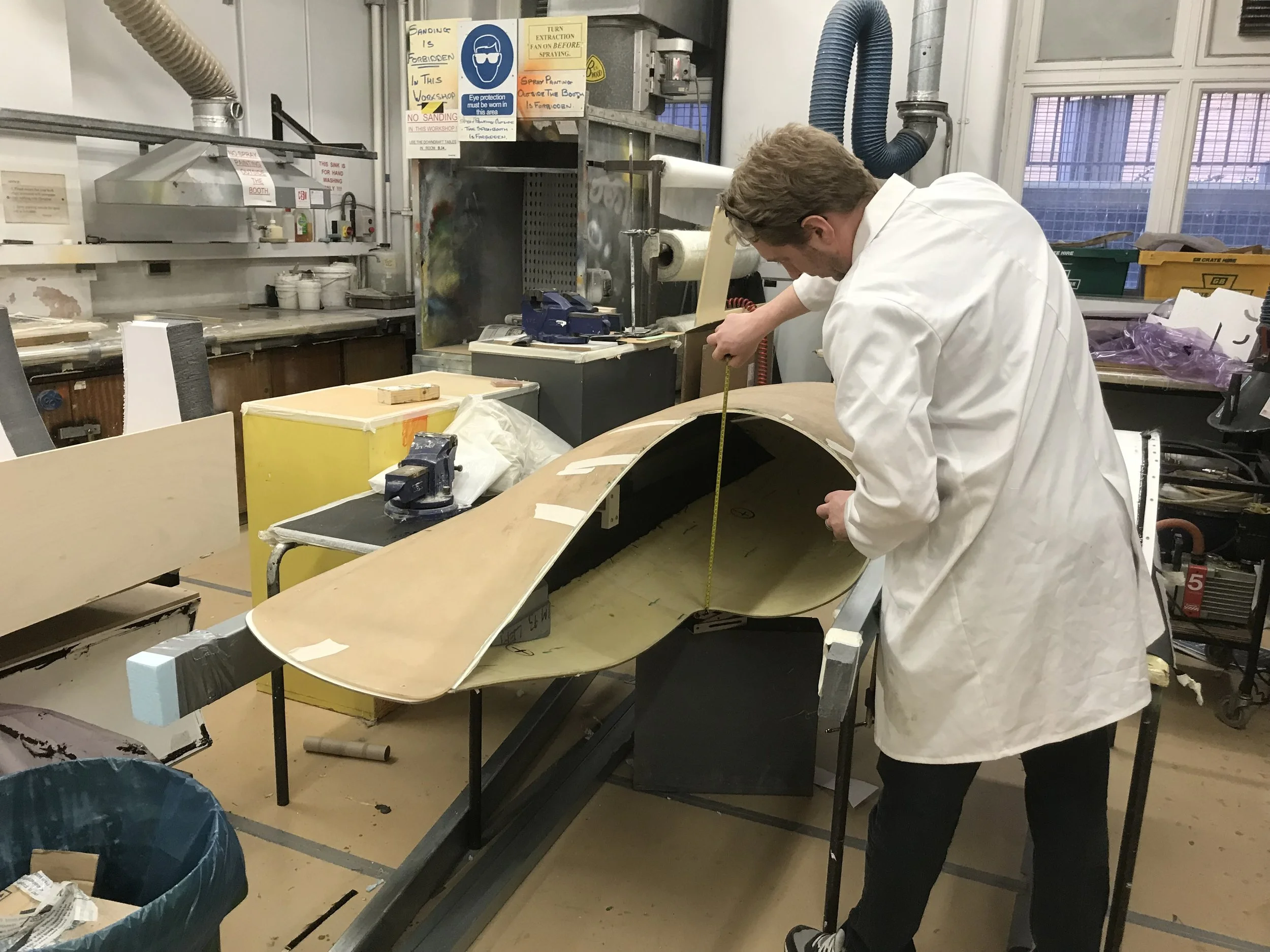The digital model used a 3mm mesh with an expanding series of 50 “inflation” layers surrounding the surface of the vehicle, starting at less than 1/100th of a mm in thickness. The simulation used a total of nearly 12 million elements. The settings used were initially validated against published empirical data from a previous record holding HPV - the Varna.
With the model thus defined, there followed an iterative process of refining the shape and curvature of each of the key areas of the vehicle, such as the nose, the footbox, the tail, and the wheel openings, and examining the effects of these changes on the airflow. Particular focus was on the “transition zone”, the region in which the airflow changes state from laminar to turbulent; this is characterised by high velocity and low pressure, resulting in high drag forces. This zone is only detected in the simulation when the roughness of the surface is also factored into the model.
A Sand Grain Roughness Height represents the sanding and polishing treatment by generating around 3 trillion microscopic hemispheres that protrude from the surface to simulate the microscopic peaks and troughs left by sanding and polishing the surface. The effect of these adds approximately 33% onto the overall viscous drag of the vehicle.
The team have worked with the Boardman Performance Centre cycle-specific wind tunnel in the past and continue to actively develop the aerodynamics for future iterations of the vehicle.




















